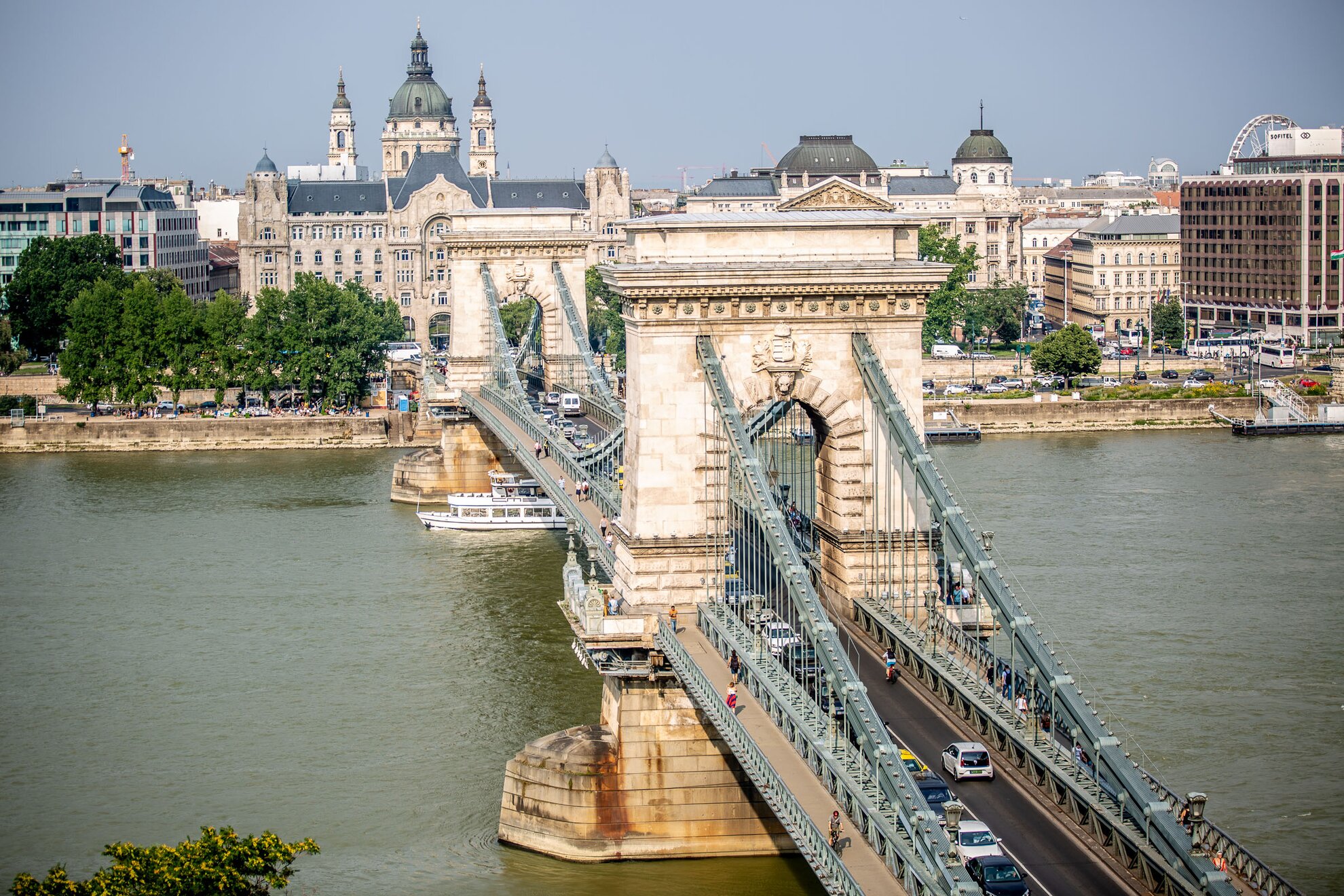The Széchenyi Chain Bridge is Budapest’s most famous landmark. It is named after the main facilitator of its construction, the great Hungarian statesman and Anglophile Count István Széchenyi. In 1820, this most influential of reformers found himself stuck on the Pest side of the Danube, unable to attend his father’s funeral on the Buda side. An inveterate traveller, Széchenyi admired many of the initiatives he saw around the industrialised world. So it was that he commissioned William Tierney Clark, responsible for the suspension bridge at Marlow, near London, to create a similar model in Budapest. Tierney Clark duly submitted his plans but spent little time in the Hungarian capital, leaving his Scottish namesake Adam Clark to oversee construction. In the time it took, from 1839 to 1849, the city evolved from a dusty town beyond Vienna to a busy Central-European metropolis. While Adam Clark became a national hero, marrying here and settling down, his house near the bridge marked with a plaque, his bridge became a symbol of the city’s development and the connection between East and West.
The Scotsman was also responsible for the Tunnel that runs under Castle Hill, the roundabout separating it from the bridge later taking his name. Local lore has it that the bridge, and its revered stone lions, are pulled into the tunnel to shelter them when it rains.
In the beginning, everyone – including noblemen – had to pay a toll for crossing, which was then lifted in 1918. Trams no longer use the bridge but the heavy traffic, including buses, mean that it is high time for renovation, due to take place from 2019.
The Chain Bridge has been used as the backdrop for several blockbuster movies and, bizarrely, as the prop for Hollywood star Will Smith to unwittingly start a strange craze to climb up it, in the summer of 2018.





